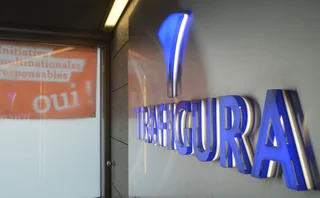
Risk committees: designing a horse and getting a camel?
When we examine what’s required of them, do risk committees hold water, asks ex-SEC risk oversight chief

It is often said that a camel is a horse designed by a committee. It has all the parts required – and then some – but the result does not necessarily meet the objective.
A risk committee is an integral component of an overall risk management programme – long viewed as a necessary forum for complex risks to be identified, evaluated and managed by experienced committee members.
Yet, as we attempt to respond to a global pandemic – which we were arguably ill-prepared to prevent or manage – it is
Only users who have a paid subscription or are part of a corporate subscription are able to print or copy content.
To access these options, along with all other subscription benefits, please contact info@risk.net or view our subscription options here: http://subscriptions.risk.net/subscribe
You are currently unable to print this content. Please contact info@risk.net to find out more.
You are currently unable to copy this content. Please contact info@risk.net to find out more.
Copyright Infopro Digital Limited. All rights reserved.
As outlined in our terms and conditions, https://www.infopro-digital.com/terms-and-conditions/subscriptions/ (point 2.4), printing is limited to a single copy.
If you would like to purchase additional rights please email info@risk.net
Copyright Infopro Digital Limited. All rights reserved.
You may share this content using our article tools. As outlined in our terms and conditions, https://www.infopro-digital.com/terms-and-conditions/subscriptions/ (clause 2.4), an Authorised User may only make one copy of the materials for their own personal use. You must also comply with the restrictions in clause 2.5.
If you would like to purchase additional rights please email info@risk.net
More on Comment
An AI-first approach to model risk management
Firms must define their AI risk appetite before trying to manage or model it, says Christophe Rougeaux
Op risk data: At Trafigura, a $1 billion miss in Mongolia
Also: Insurance cartels, Santander settlement and TSB’s “woeful” customer treatment. Data by ORX News
UST repo clearing: considerations for ‘done-away’ implementation
Citi’s Mariam Rafi sets out the drivers for sponsored and agent clearing of Treasury repo and reverse repo
Op risk data: Macquarie mauled by securities mismarks
Also: Danske’s costliest branch, tedious times for TD, and WhatsApp won’t stop. Data by ORX News
Climate stress tests are cold comfort for banks
Flaws in regulators’ methodology for gauging financial impact of climate change undermine transition efforts, argues modelling expert
Op risk data: Shady loans robbing Reliance of $1.1bn
Also: H20’s less-than-liquid holdings, Ripple ripped for $125m, and more WhatsApp slaps expected. Data by ORX News
FX algo users change tack to navigate market doldrums
BestX data finds traders ditching TWAP in favour of more opportunistic execution styles
Op risk data: Payday lender Skytrail sees $1.4bn disappear
Also: Cartel claims cost European bond dealers dearly, plus oil price gouging and crypto cover-ups. Data by ORX News








